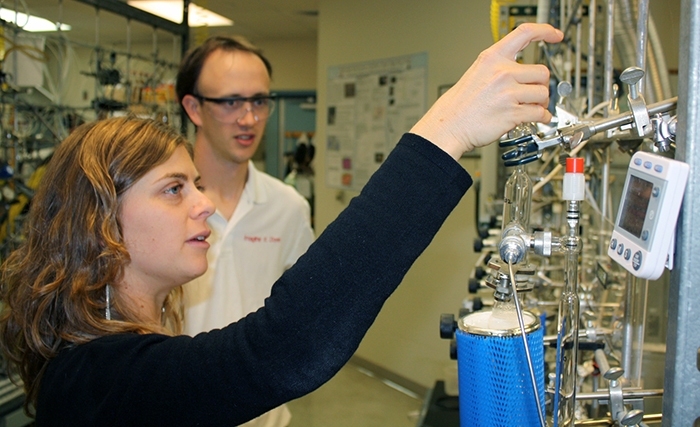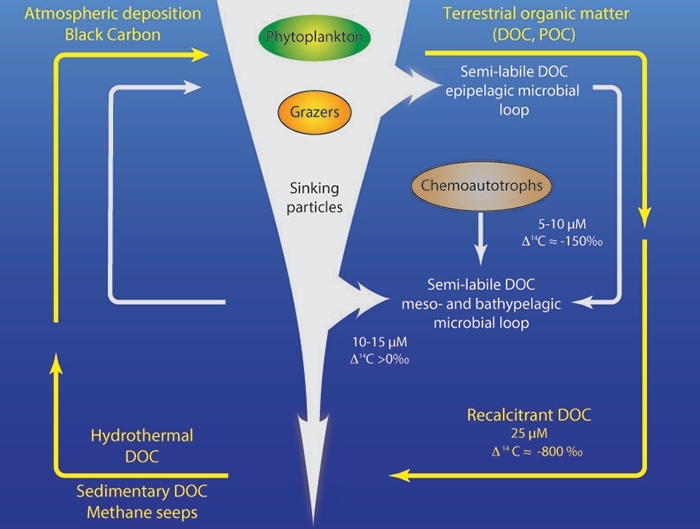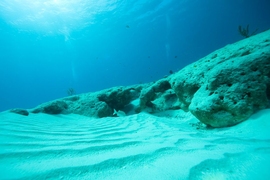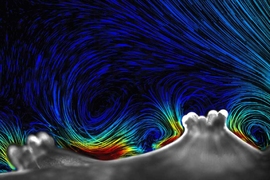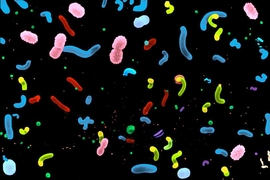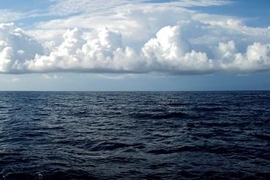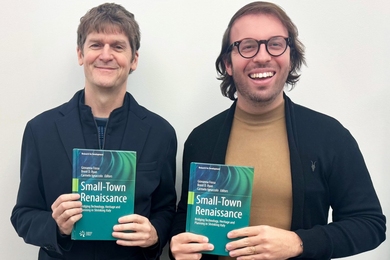Understanding how oceans absorb and cycle carbon is crucial to understanding its role in climate change. For approximately 50 years, scientists have known there exists a large pool of dissolved carbon in the deep ocean, but they didn’t know much about it — such as the carbon’s age (how long it’s been in organic form), where it came from, how it got there, and how long it’s been there, or how these factors influence its role in the carbon cycle.
Now, new research from scientists at MIT and Woods Hole Oceanographic Institute (WHOI) provides deeper insights into this reservoir and reveals a dynamic deep-ocean carbon cycle mediated by the microbes that call this dark, cold environment home. The work, published in Proceedings of the National Academy of Sciences, suggests the deep ocean plays a significant role in the global carbon cycle, and has implications for our understanding of climate change, microbial ecology, and carbon sequestration.
For years, scientists thought that carbon of varying ages made up the deep-ocean reservoir and fueled the carbon cycle, but nobody could prove it. “I’ve been trying for over 20 years,” said Daniel Repeta, a senior scientist in marine chemistry and geochemistry at WHOI and co-author of the study. “Back then we didn’t have a good way to go in and pull that carbon apart to see the pieces individually. We would get half-answers that suggested this was happening, but the answer wasn’t clear enough,” he says. With the help of Daniel Rothman, a professor of geophysics in MIT’s Department of Earth, Atmospheric, and Planetary Sciences (EAPS), and Chris Follett, a postdoctoral associate in Mick Follows’ group and formerly of Rothman’s group, Repeta would soon find the answers he was looking for.
Follett thought a next-generation method called a step-wise oxidation test might be able to reveal the age distribution of the carbon pool. The team exposed water samples taken from the Pacific Ocean to ultraviolet radiation, which converts organic carbon to carbon dioxide. The gas was then collected and measured for radiocarbon, which Follett used to estimate the carbon isotopes’ ages and cycling rate. “At a minimum there are two widely separated components — one extremely young and one extremely old, and this young component is fueling the larger flux through the dissolved carbon pool,” he says.
In other words, the youngest source of dissolved organic carbon in the deep ocean originates from the surface, where phytoplankton and other marine life fix carbon from the atmosphere. Eventually these organisms die and sink down the water column, where they dissolve and are consumed by microbes. Because it takes 1,000 years for the ocean’s surface waters to replace bottom waters, scientists thought the few-centuries-old carbon, some of which is anthropogenic, couldn’t possibly contribute to the deep ocean pool. That’s no longer the case.
The researchers found that as particulate organic carbon sinks through the water column and dissolves, some of it is sequestered in the reservoir and respired by microbes. The results suggest a more active carbon cycle in the deep ocean bolstered by bacteria that utilize the reservoir as a food source. “We previously thought of the deep ocean as a lifeless and very slow system,” Repeta says. “But those processes are happening much faster than we thought.” If this microbial pump is in fact more robust, then it gives more credence to the idea of using the mechanism to sequester carbon in the deep ocean — a concept some scientists have been working on in recent years.
While some carbon in the reservoir may cycle faster, older carbon cycles much slower. This is because older sources such as hydrothermal vents, methane seeps, and ocean sediment produce carbon that isn’t easily consumed. However, these sources are often disregarded in analyses of the marine carbon cycle because they are considered too small in magnitude to be significant. But when Follett accounted for them in calculating the reservoir’s turnover, or the time it takes for carbon to completely cycle, what he found was astounding. The turnover time of the older portion of the reservoir is 30,000 years — 30 times longer than it takes for the ocean itself to cycle — which indicates these sources may be relevant. “To find something that is more consistent with the biochemical story was fun and surprising,” says Follett. “A lot of people have proposed these ideas over the years, but they haven’t had the evidence to back them up. It was nice to come in and give them the evidence they needed to support these ideas.”
So what do these findings mean for the climate system? In the short term, not much. But on a longer time-scale, one that spans thousands of years, it could affect projections of the amount of atmospheric and sequestered carbon. “It potentially has a very important influence on climate through its role in sequestration of carbon away from the atmosphere,” says Mick Follows, an EAPS associate professor in the Program of Atmospheres, Oceans, and Climate, who was not involved in the study. “If some radical change occurred that changed the nature of that pool, then it could have an effect on climate through greenhouse gas’ influence on the atmosphere.” Such changes might include, for example, deep-ocean temperature fluctuations affecting microbial activity, or a shifting surface ocean environment that could affect plankton and other organisms from which dissolved organic carbon originates.
“One of the things I’ve taken away from the work is that in a way, they’ve transformed a view of how people are thinking that pool is turning over in the deep ocean and what the sources of that are,” says Follows. “It seems like a very profound change in our understanding of how the system works relative to ingrained perspectives.”
